Don't wanna be here? Send us removal request.
Text
Battery for Car Camera: What You Need to Know
Why External Power Is Important
Dash cams typically rely on car power, but for continuous surveillance like parking mode, a dedicated battery for car camera ensures non-stop recording even when the engine is off.
Types of Power Options Available
There are two main types: hardwired connections to the vehicle's fuse box and standalone dash cam batteries. Hardwiring offers seamless power, while external batteries are safer for cars with delicate electrical systems.
Capacity and Runtime Considerations
The ideal battery for car camera should offer 20-24 hours of runtime for overnight parking protection. Look for high-capacity lithium batteries with built-in safety features like temperature control and overcharge protection.
Installation and Safety Tips
Professional installation is often recommended for hardwire kits. For standalone batteries, ensure secure mounting and use heat-resistant casings to prevent damage in hot conditions.
Does It Affect Your Car’s Battery?
With proper configuration, a dedicated battery for car camera minimizes risk to your car’s main battery by drawing power independently or shutting off before voltage drops too low.
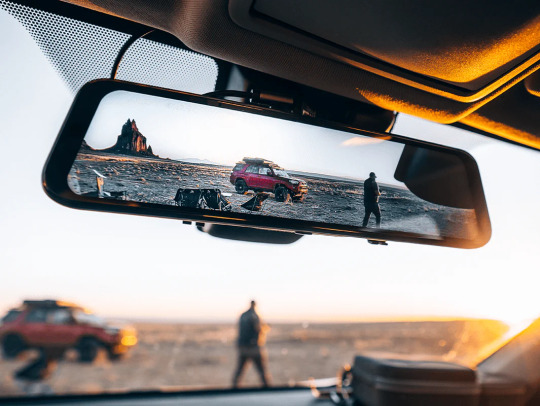
1 note
·
View note
Text
Best Dash Cam for Uber Drivers: What Features Matter Most?
Why Dash Cams Are Essential for Uber Drivers
Rideshare drivers face unique challenges—passenger disputes, false claims, and unpredictable traffic incidents. Having the best dash cam for Uber drivers adds a layer of security by recording both the road and cabin, protecting both the driver and passengers.
Must-Have Features for Rideshare Dash Cams
To meet Uber’s professional standards, a dual-facing dash cam is recommended. Front-facing footage helps in case of road incidents, while inward-facing footage is useful for monitoring in-vehicle behavior. Look for models with 1080p (or higher) resolution, infrared night vision, and audio recording capabilities.
Parking Mode for Off-Hours Protection
Even when not driving, Uber vehicles can be vulnerable. The best dash cam for Uber drivers should include parking mode with motion detection to capture incidents while the car is unattended.
Easy Data Access and Cloud Syncing
Wi-Fi connectivity and mobile apps help drivers quickly share footage when needed. Some models offer cloud backup, useful in case the camera is damaged or stolen.
Legal Considerations for Uber Dash Cams
Always check local laws regarding audio recording and in-cabin video. Clear signage or verbal notice to passengers may be required.
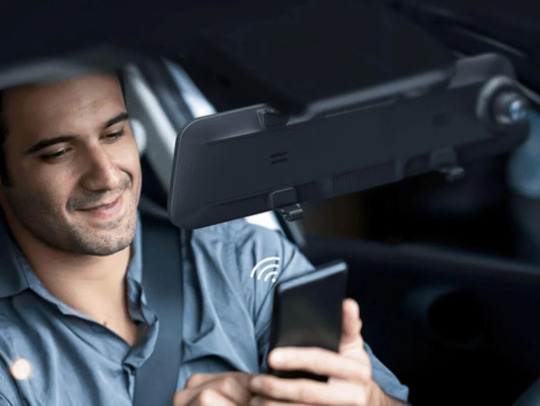
0 notes
Text
Best Mirror Dash Cam: Key Features and How to Choose One
What Is a Mirror Dash Cam?
A mirror dash cam is a device that replaces or attaches to your existing rearview mirror and combines front and rear video recording. It often features a touchscreen display, making it easier to navigate settings and view footage. The Best Mirror Dash Cam provides enhanced visibility, dual-camera coverage, and discreet installation—all in one unit.
Key Features to Look for in the Best Mirror Dash Cam
When shopping for the Best Mirror Dash Cam, consider these must-have features:
Dual 1080p or 4K Recording: Clear footage from both front and rear is essential for capturing incidents accurately.
Loop Recording & G-Sensor: Ensures continuous recording and automatic event saving when motion or impact is detected.
Wide-Angle Lens: A wider field of view (140°–170°) improves coverage and minimizes blind spots.
Night Vision: Infrared or low-light capabilities are crucial for nighttime driving and parking surveillance.
Parking Mode: Records events even when your car is off, offering 24/7 protection.
Touchscreen Interface: Makes navigating menus and reviewing footage much more intuitive.
Benefits of Choosing a Mirror Dash Cam
The Best Mirror Dash Cam enhances safety without cluttering your windshield. Unlike traditional dash cams, it blends into your car’s interior and provides a cleaner look. Plus, many models offer a real-time rear camera feed that improves rear visibility—especially helpful in larger vehicles or during bad weather.
Installation and Compatibility
Most mirror dash cams are easy to install with rubber straps or clip-on mounts and are powered via the cigarette lighter or hardwired. Check for vehicle compatibility and whether the rear camera supports waterproofing if it’s mounted externally.
A Best Mirror Dash Cam is an all-in-one solution for drivers who want advanced features with minimal setup and maximum coverage.

0 notes
Text
How to Format a Micro SD Card for Dash Cams: 3 Simple Methods
Why Formatting Your Micro SD Card Matters
Formatting a micro SD card regularly is essential for optimal dash cam performance. It helps prevent file corruption, clears old data, and ensures smooth video recording. If you're using a card in a dash cam, knowing how to format a micro SD card the right way can extend its life and avoid recording failures.
Method 1: Format the Micro SD Card Directly in the Dash Cam
Most modern dash cams include a built-in format option:
Insert the card into your dash cam and turn it on.
Navigate to the settings menu.
Look for an option like “Format SD Card” or “Storage Format.”
Confirm the prompt to start formatting.
This is the safest and most recommended method, as the dash cam applies the ideal file system (usually FAT32 or exFAT) for compatibility.
Method 2: Format on a Windows PC or Mac
If the dash cam option isn’t available or the card is malfunctioning:
Insert the micro SD card via adapter or card reader.
On Windows, open File Explorer > Right-click the SD card > Select “Format.”
Choose FAT32 (for cards 32GB or smaller) or exFAT (for 64GB and larger).
Click “Start” to begin.
On Mac, use Disk Utility > Select the card > Erase > Choose FAT32 or exFAT > Erase.
This method gives you more control over format types and is useful for troubleshooting.
Method 3: Format Using a Smartphone (Android or iPhone)
On Android:
Insert the micro SD card.
Go to Settings > Storage > Tap the card > Format.
On iPhone (via Lightning to SD adapter):
iOS does not allow native formatting. Use a third-party app or format using a PC/dash cam.
Formatting your card correctly ensures your dash cam records reliably and helps avoid data loss.

0 notes
Text
What’s the Best Dash Cam for Pickup Trucks — and Why Does It Matter More Than You Think?
Pickup truck owners face unique driving conditions — from off-road terrain to long-haul towing. So when searching for the best dash cam for pickup trucks, it's essential to consider the specific features that meet the demands of larger vehicles and rugged usage.
Why Do Pickup Trucks Need a Different Dash Cam?
Unlike compact cars, pickup trucks often have larger blind spots, longer braking distances, and may be used in work zones or remote areas. This means a standard dash cam may not offer the coverage or durability needed. High search queries include:
What’s the best dash cam for towing?
Can a dash cam handle rough roads or extreme weather?
How do I record both the truck and trailer?
These concerns point to the need for durable, wide-coverage dash cams built specifically with trucks in mind.
Key Features to Look For in a Dash Cam for Pickup Trucks
Wide-angle front and rear cameras to cover longer bodies and trailers
Heavy-duty mounting systems that stay secure on rough terrain
Weather resistance, especially for rear cams exposed to the elements
Night vision and HDR for low-light driving in rural or construction zones
Extended cable length to reach the rear window or trailer hitch area
Who Benefits Most from a Truck-Specific Dash Cam?
Contractors protecting work equipment
Towing drivers monitoring trailers or cargo
Off-road enthusiasts capturing trail footage and incidents
Finding the best dash cam for pickup trucks is less about brand and more about matching the features to your driving needs. Whether for liability, security, or documentation, the right dash cam setup can make a big difference on and off the road.

0 notes
Text
Why More Drivers Are Choosing a 3 Channel Dash Cam for Complete Road Coverage
As road safety becomes a growing concern, many drivers are turning to the 3 Channel Dash Cam for its ability to capture comprehensive footage. But what makes this device increasingly popular, and how does it offer more value than a standard front or dual dash cam?
What Is a 3 Channel Dash Cam?
A 3 channel dash cam records from three angles: the front of the vehicle, the rear, and inside the cabin. This setup ensures that all major viewpoints are covered — ideal for rideshare drivers, parents, delivery workers, or anyone wanting full visibility around their vehicle.
What Problems Does a 3 Channel Dash Cam Solve?
High search volume queries show that many drivers ask:
How can I protect myself from false accident claims?
What dash cam is best for Uber or Lyft drivers?
How do I monitor my car while parked?
The 3 channel dash cam addresses these by offering video proof in multiple directions, capturing in-cabin incidents, and supporting features like parking mode and G-sensors to detect motion or impact even when the car is off.
Who Benefits Most from Using One?
Rideshare drivers gain peace of mind with passenger footage.
Parents can monitor teenage drivers from inside and out.
Daily commuters are protected from rear-end collisions and insurance disputes.
Key Features to Look For
Full HD or 4K resolution for clarity
Wide-angle lenses (over 150°)
Infrared night vision for the cabin
Loop recording and large SD card support
Choosing a 3 channel dash cam can significantly enhance your driving security. It's not just about recording accidents — it's about having a full picture, every time you drive.
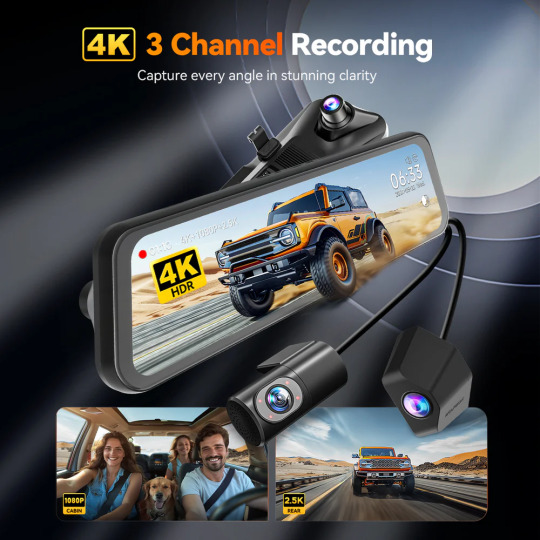
0 notes
Text
Best Tips on Where to Place Dash Cam for Clear Recording
Installing a dash cam is a smart way to protect yourself on the road, but many drivers wonder Where to Place Dash Cam for the best recording angle and legal compliance. Proper placement directly affects the quality of your footage and your safety while driving.
1. Best Location: Behind the Rear-View Mirror
The most recommended spot is right behind the rear-view mirror, centered on the windshield. This position captures a wide view of the road without distracting the driver. It’s also less noticeable from outside, reducing the risk of theft.
2. Avoid Obstructing Sensors
Modern vehicles often have cameras and sensors near the windshield for features like lane assist and automatic braking. When deciding Where to Place Dash Cam, make sure it does not block any of these systems.
3. Rear Dash Cam Placement
If you’re installing a rear dash cam, the best place is at the top center of the rear windshield. This angle ensures a clear and full view of vehicles and obstacles behind you.
4. Windshield vs Dashboard
While some choose to mount dash cams on the dashboard, this setup may lead to glare or a limited field of vision. The windshield generally offers a higher and more stable angle for recording.
5. Cable Management Tips
Use the edges of the windshield and the car’s trim to neatly hide cables. Avoid placing wires where they might interfere with airbags or controls.
Choosing the right place ensures optimal recording quality and compliance with local laws. Always take a few test videos after installation to confirm that your dash cam captures everything you need.

0 notes
Text
Choosing the Best Dash Cam for Tesla: What You Need to Know
Tesla vehicles are known for their advanced built-in cameras and security features like Sentry Mode, but many owners still consider adding an extra layer of protection with an independent dash cam. If you're wondering whether it's worth installing a Dash Cam for Tesla, the answer depends on your driving needs and personal preferences.
One common reason drivers add an external dash cam is video quality. Although Tesla’s system records continuously, the footage can sometimes lack the clarity needed for legal or insurance purposes. A high-resolution dash cam offers sharper night vision, wider coverage angles, and reliable footage storage, giving you peace of mind during both daily commutes and long road trips.
Another frequent question is about installation. Many modern dash cams are easy to install without interfering with Tesla’s Autopilot sensors. Options like hardwiring kits or USB-powered cams allow for clean setups that maintain the sleek interior design of the car. It's important to ensure that any device you install doesn't obstruct your view or violate local laws regarding windshield-mounted devices.
Storage capacity is another key consideration. Tesla’s built-in system uses a USB drive, which can fill up quickly. A separate dash cam often comes with its own microSD card, offering more flexibility for recording and saving critical footage.
When choosing a Dash Cam for Tesla, look for models that support parking mode, loop recording, and 4K resolution to maximize protection. Features like motion detection and cloud backup can further enhance your vehicle’s security, making sure you’re covered even when you're not around.
Adding a dedicated dash cam is a smart investment for Tesla owners who value clear, reliable video evidence and extra peace of mind on the road.
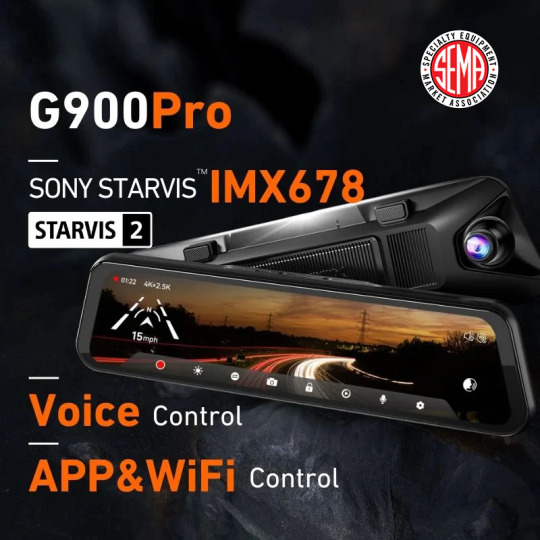
0 notes
Text
4K vs. 1080p Dash Cam: Which One Is Right for You?
When choosing a dash cam, one of the most common debates is 4K vs. 1080p dash cam—and for good reason. Video resolution can significantly impact the usefulness of your footage in real-world scenarios like accidents, parking incidents, or even insurance disputes.
So, what’s the difference? A 4K dash cam records at a resolution of 3840 x 2160 pixels, offering four times the detail of a standard 1080p (Full HD) dash cam. This higher resolution means sharper license plates, clearer faces, and better visibility in challenging lighting conditions, which can make all the difference in proving what really happened.
However, 1080p dash cams still hold their own. They're often more affordable, use less storage, and are more than sufficient for general daily driving. If you're mostly driving in well-lit areas and want a simple, reliable recording, a high-quality 1080p camera might meet your needs without breaking the bank.
But if you frequently drive at night, in busy urban areas, or want maximum clarity for legal or insurance purposes, investing in a 4K dash cam could be a game-changer. Many newer 4K models also come with additional features like enhanced night vision, HDR, Wi-Fi connectivity, and advanced driver assistance systems (ADAS).
Ultimately, the choice between a 4K vs. 1080p dash cam comes down to how much detail you need, how much you're willing to spend, and how you plan to use the footage. Whether you prioritize resolution, features, or storage efficiency, understanding these differences ensures you pick the best dash cam for your driving lifestyle.
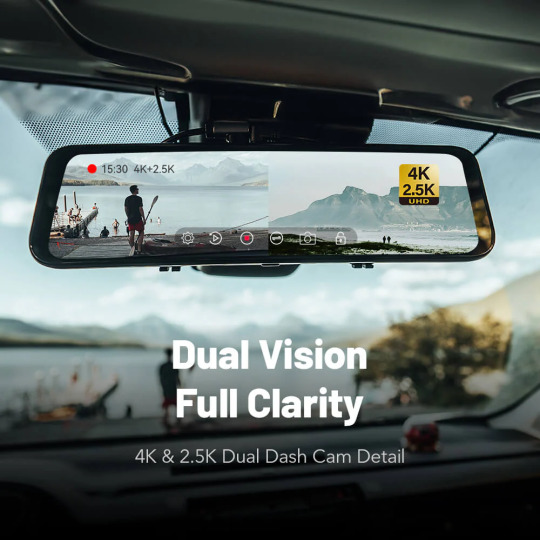
0 notes
Text
Why a Dash Cam with GPS is a Smart Investment for Safer Driving
If you’re looking for a way to protect yourself on the road, a dash cam with GPS is one of the smartest investments you can make. These compact devices not only record what happens in front of (and sometimes behind) your vehicle, but also provide precise location data, speed tracking, and time stamps—crucial details in case of an accident or dispute.
One of the most common questions drivers have is: Why choose a dash cam with GPS over a regular dash cam? The answer lies in the added layer of accountability and context. In the event of a collision or insurance claim, GPS data can clearly show your vehicle's position and speed, helping to prove your case and avoid false liability. This information can also be a valuable tool if you receive an unfair speeding ticket.
Another rising concern for drivers is theft or vandalism when parked. Many dash cams with GPS come with parking mode, motion detection, and even cloud connectivity to alert you in real-time if something happens to your vehicle—whether you’re nearby or not.
Fleet owners and rideshare drivers also benefit greatly from GPS-enabled dash cams. Real-time tracking and video footage allow for safer driving practices, better route optimization, and faster incident resolution.
When choosing a dash cam with GPS, look for features like loop recording, G-sensor, night vision, and wide-angle lenses. Popular brands like Garmin, Vantrue, and Nextbase offer excellent options tailored to various budgets.
In today’s world, where road rage, scams, and traffic incidents are increasingly common, a dash cam with GPS isn’t just a gadget—it’s your personal eyewitness and peace of mind on every journey.
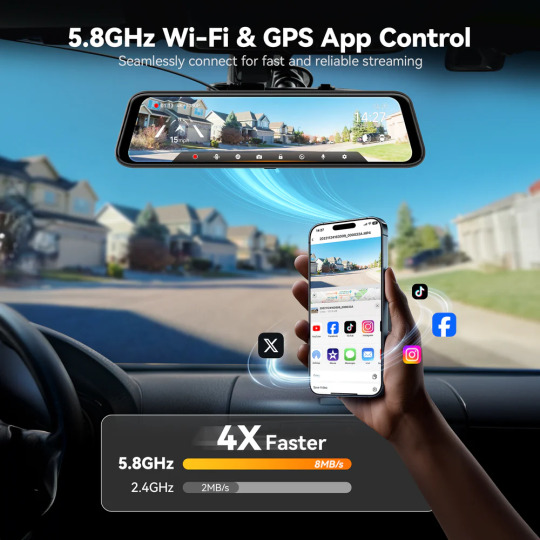
1 note
·
View note